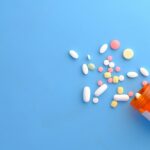What is Addiction?
When we hear the term ‘addiction’ it is common to immediately think of alcohol or drugs. However, addiction is simply when a person cannot seem to stop doing something, even though it is causing them harm. This can include alcohol or drugs but can also include behaviors, which are also known as process addictions.
Addiction is thought to be caused by a variety of factors including genetics and trauma. Traumatic events include childhood abuse or neglect, sexual abuse, war, natural disasters, motor accidents, although from a therapeutic point of view any prolonged stress can be traumatic.
An addicted person will experience urges and compulsions to use or behave in a certain way in order to satisfy their addiction. This can be disruptive to daily life as the person will tend to prioritize their addiction over the rest of their life, and may experience overwhelming anxiety, frustration, or agitation if they cannot satisfy their addiction.
In this blog, we will explore substance addiction and its signs. As addiction is a progressive disease, the earlier a person receives intervention the more likely it is they have a successful recovery. We are going to outline and discuss the signs of substance addiction, so that you the reader can be better prepared to notice an addiction in its early stages, either in yourself, a friend, or a loved one.
Understanding Substance Addiction
Many of us use substances on a daily or weekly basis (caffeine, alcohol, nicotine). Simply using substances is not usually problematic – caffeine and alcohol in moderation do not cause lasting harmful health consequences. However, any substance can be habit forming and some can be physically addictive. This can pose significant health risks.
Drugs that are not physically addictive but can be habit forming are:
- Cocaine and crack
- Methamphetamine and amphetamine
- Marijuana
Drugs that can cause physical dependency include:
- Alcohol
- Opiates and opioids such as heroin, morphine, fentanyl, oxycodone, oxymorphone, and codeine
- GHB and GBL
- Benzodiazepines such as Xanax, Ativan, and Valium
- Ambien
Substance Withdrawal Symptoms
Substances that are physically addictive change the make-up of the brain. This means that the brain and body become dependent on this substance to function normally. If the substance is stopped abruptly, withdrawal symptoms can range from extremely uncomfortable to fatal. This leads the addict to pursue the substance to stave off these symptoms. Eventually, the addict will build up a higher and higher tolerance and will need more of the substance to prevent withdrawal.
Withdrawal symptoms tend to vary depending on the substance of addiction, but according to SAMHSA they typically include:
- Anxiety
- Difficulty falling or staying asleep
- Short-term memory problems
- Fatigue
- Poor focus, concentration and decision making
- Cravings for a substance
- Poor executive function
- Anhedonia
- Depression
- Dysphoria
- High Irritability
- Physical aches and pains
- Reduced sex drive
- Diarrhea
- Shaking and sweating
- Those addicted to substances may seek to hide their problem from their friends and loved ones. When approached or confronted, they may persistently deny their condition or avoid others altogether in order to prevent confrontation.
Due to this denial, often withdrawal symptoms are the first thing that friends and family will notice in someone who is addicted. This is why it is important to be aware of how the symptoms may present in people. It is especially helpful to look for these occurring in conjunction with the behavioral and physical signs of addiction, which are listed later in the blog.
The sooner an addiction is noticed the sooner you can provide your friend or loved one with the help that they need. Being aware of these signs puts you in the best position to notice addiction in its earliest stages and prevent the condition from worsening.
The Signs of Addiction
Substance use takes its toll on the body. The following are some physical signs of substance to look out for, according to the U.S. Department of Justice.
- Headaches
- Insomnia
- Broken facial capillaries
- Shaking and trembling
- Sudden, drastic weight loss or gain
- Unfocused eyes
- Flushed skin
- Track marks (due to injection)
Beyond the physical symptoms of addiction, there are certain behavioral changes that are characteristic of substance abuse. Look out for:
Frequent blackout
instances of memory loss
Argumentative disposition
Depression
Frequent mood swings
Regularly using drugs to relax or help with sleep
Using substances alone, or in secret
Promising to not use – then using anyway
Social withdrawal or avoidance
Neglecting previously enjoyed hobbies and interests
High-risk behavior (unprotected sex, driving under the influence)
Lying to loved ones
Neglecting personal hygiene
Stealing money, borrowing without repaying, with no explanation
Possession of drug paraphernalia* (Pipes, cigarette papers, bongs, miniature spoons)
*Possession of paraphernalia is a clear sign that a person is using drugs. However, this does not necessarily mean that they are addicted. A person may own cigarette papers for rolling tobacco, which they can use to roll joints. Perhaps there are empty bottles in their bedroom or left lying around the house. The type of paraphernalia found should be noted. While cigarette papers or bottles are not always a cause for worry, possession of needles and burnt spoons, or small plastic bags with residual white powder certainly indicate that the person is using harmful substances and intervention is necessary. Again, confronting your loved one alone is not advised. If paraphernalia is found, consult with an addiction professional as the first step.
Changes to Daily Life Following Addiction
Excessive use of substances can lead to significant changes in relationships. Those addicted to substances may begin to spend more time with others who use the same substance and neglect previous relationships. Family and friends may observe that their loved one is less socially engaged than before and is secretive or avoidant about discussions on how they have been spending their time.
Academic and professional performance can be hindered by excessive substance use. Students with a previous record of good grades may begin to decline in academic performance, due to less time spent studying and the actual effects of the drugs.
Important attributes for professionals may diminish, such as punctuality, motivation, and work ethic. Problems may arise in relationships with managers, supervisors, and other co-workers.
Spotting the Signs of Addiction in Adolescents
The signs of addiction outlined above can be considered if you believe your loved one is abusing substances. Teenagers, given their life stage, are prone to mood swings and secretive or rebellious behavior. Behaviors that seem like addiction may just be a normal part of their stage of development and vice versa.
In order to notice the signs of addiction in a teenager, it is important to stay informed about multiple signs. Furthermore, younger generations often find innovative ways of using substances. For example, you may find plastic bottles with burn holes in them (used for smoking, like a bong). It is important for parents to stay informed about different types of paraphernalia that their teenagers may be using.
Spotting a Process Addiction
Process addictions can be harder to spot than substance addictions, as they do not tend to take as hard a toll physically on the body. They are also not intoxicating, so you will not see people acting as out of character as you may with alcohol or drugs. However, there are signs you can look out for. They include, but are not limited to:
- Unaccountable money going missing (gambling, shopping)
- Forgoing other life activities (all)
- Frequently lying about whereabouts or activities (all)
- Disrupted living habits (all)
- Sudden weight loss or gain (eating disorder)
- A sudden change in character (all)
In Conclusion
The consequences of addiction permeate through all aspects of an affected individual’s life, from their physical and psychological health to emotional and behavioral well-being to relationships with themselves with others. Addiction, untreated can impact not only the life of the individual but also the lives of his or her family and friends. In this blog, we have outlined the signs of addiction so that you can be vigilant around your loved one’s suspected addiction and take the right course of action if you believe they are abusing substances. If you are reading this, your loved one is fortunate, because they have someone in their life who wants the best for them.
Khoury, Lamya et al. “Substance use, childhood traumatic experience, and Posttraumatic Stress Disorder in an urban civilian population.” Depression and anxiety vol. 27,12 (2010): 1077-86. doi:10.1002/da.20751
Chiang WK, Goldfrank LR. Substance withdrawal. Emerg Med Clin North Am. 1990 Aug;8(3):613-31. PMID: 2201524.
“Scientific Opinion On The Safety Of Caffeine”. Vol 13, no. 5, 2015. Wiley, doi:10.2903/j.efsa.2015.4102. Accessed 22 Oct 2020.
Leshner, Alan I. “Addiction Is A Brain Disease, And It Matters”. Science, vol 278, no. 5335, 1997, pp. 45-47. American Association For The Advancement Of Science (AAAS), doi:10.1126/science.278.5335.45. Accessed 22 Oct 2020.
“Protracted Withdrawal.” Samhsa.gov, U.S. Department Of Health and Human Services , July 2010, store.samhsa.gov/sites/default/files/d7/priv/sma10-4554.pdf.
“Drug Paraphernalia Fast Facts”. Justice.Gov, 2020, https://www.justice.gov/archive/ndic/pubs6/6445/6445p.pdf.
Brown, S. A. (1993). Drug effect expectancies and addictive behavior change. Experimental and Clinical Psychopharmacology, 1(1-4), 55–67. https://doi.org/10.1037/1064-1297.1.1-4.55
Kaestner, Robert, and Michael Grossman. “Wages, Workers’ Compensation Benefits, and Drug Use: Indirect Evidence of the Effect of Drugs on Workplace Accidents.” The American Economic Review, vol. 85, no. 2, 1995, pp. 55–60. JSTOR, www.jstor.org/stable/2117891. Accessed 22 Oct. 2020.




